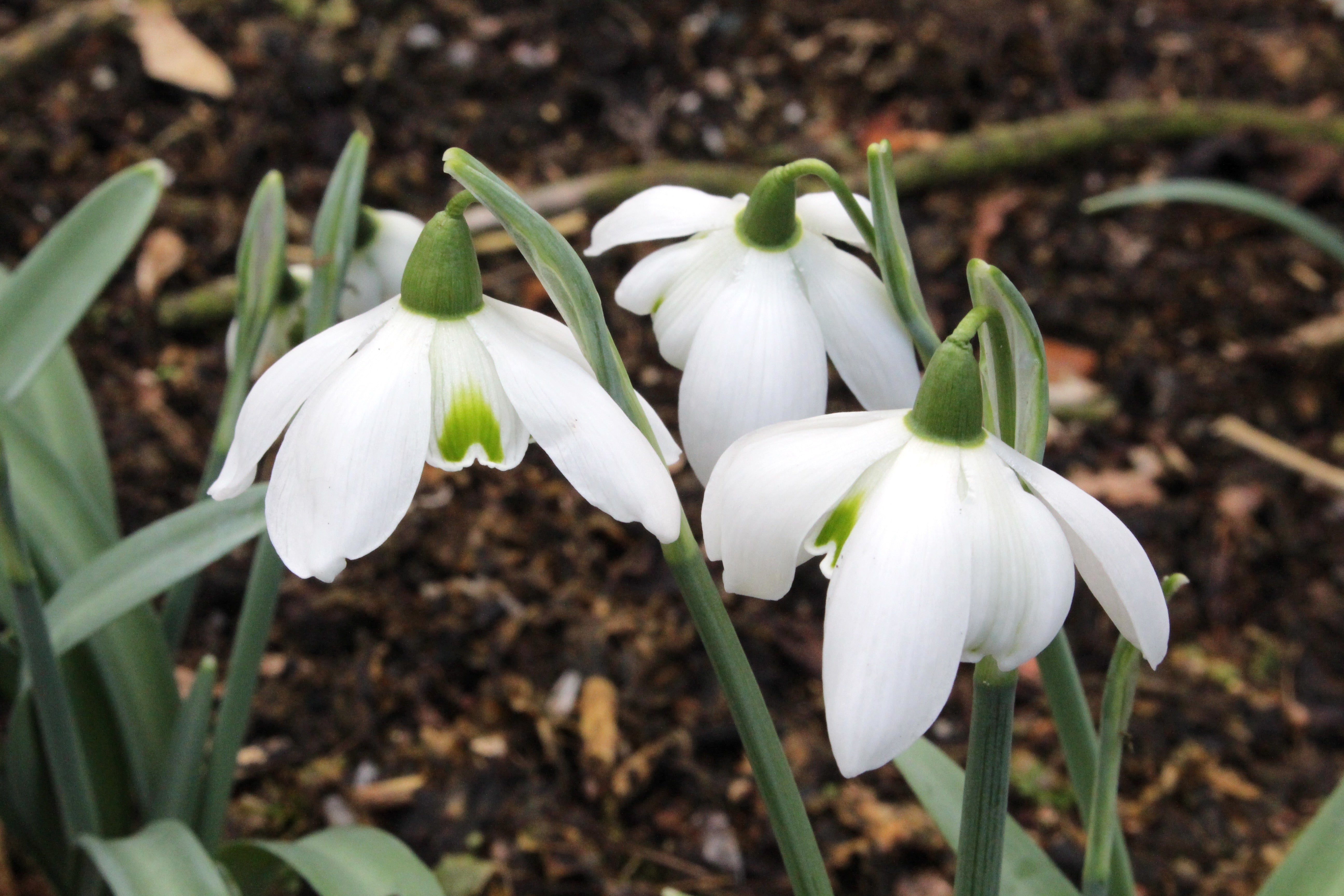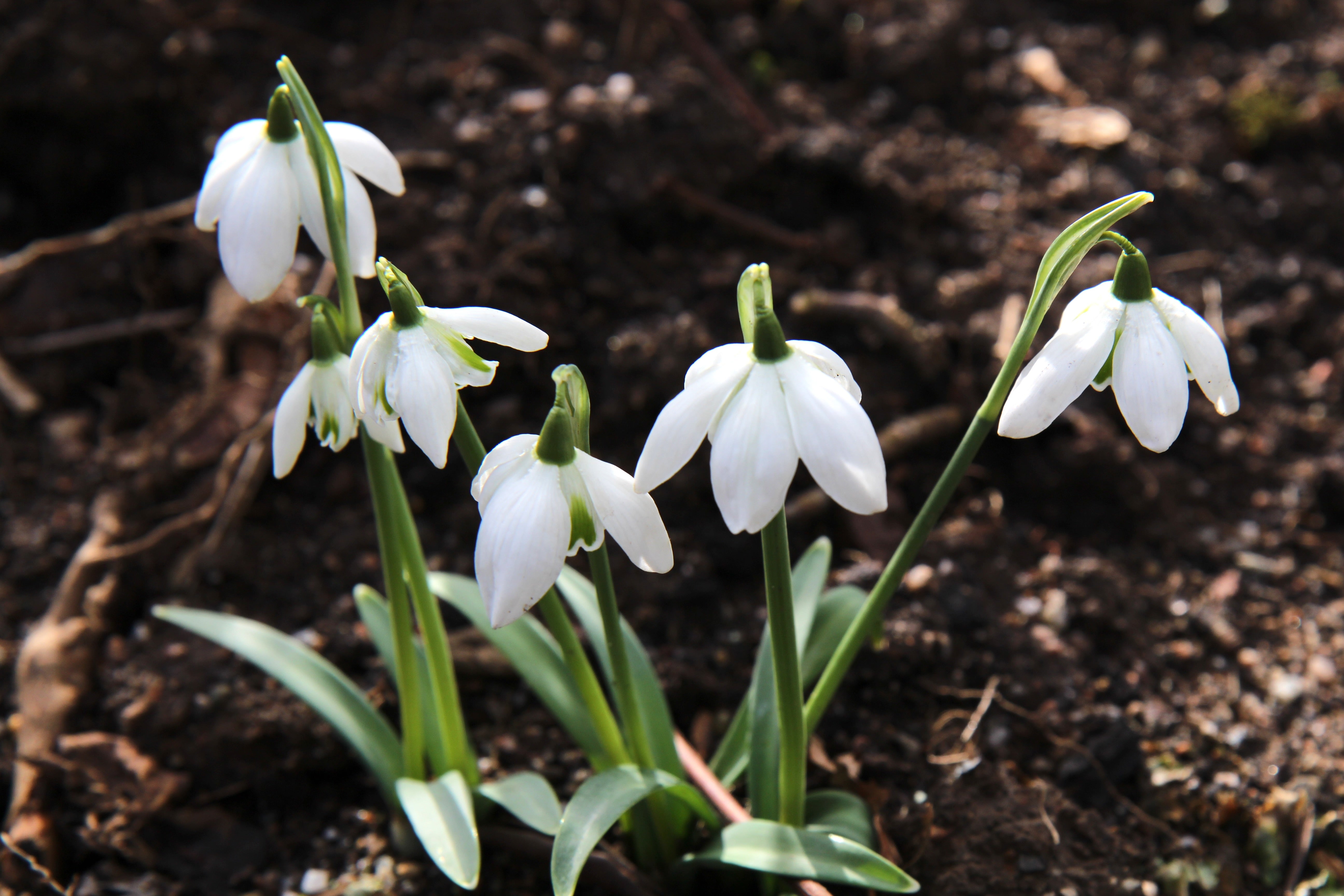Galanthus 'Hill Poë' (d)
Approx. 0.5 litre pot
About this cultivar:
Galanthus 'Hill Poë' (d) is known for its upright, bluish-green (glaucous) foliage, often showing a subtly folded edge, occasionally present on just one leaf. It blooms toward the end of the snowdrop season, sometimes as late as April, producing large, elegant flowers. The inner petals form a well-organized, densely packed frill, making it one of the most symmetrical double varieties. Mature plants typically present five broad outer segments, or occasionally six, as opposed to the usual three or four seen in other doubles.
Re-hashing other info out there: first discovered by James Hill Poë in 1911 at Riverston, Ireland. It gained prominence thanks to E.A. Bowles and was preserved through the efforts of D. Shackleton and the Giant Snowdrop Company.
I can't find any evidence of this apart from the fact the story is repeated all over the internet. I did find in 1923s 'Thom's Irish Who's Who' there is a listing for Capt. James Hill POË,, M.A. (T.C.D.), D.L., J.P. Co. Tipperary; late Capt. 94th Regt....
Anyway - great snowdrop!
**Price is for 1 bulb supplied in a pot**
- Position: Full sun, partial shade
- Soil: Almost any soil, grows well in Ballyrobert
- Flowers: February, March, April
- Other features: Grows well in Ballyrobert
- Hardiness: H5 - Hardy in most places throughout the UK even in severe winters (-15 to -10°C), Fully hardy - grows well in Ballyrobert!
- Habit: Tufted
- Foliage: Deciduous
- Height: 10 - 15 cm (0.3 - 0.5 ft)
- Spread: 0 - 15 cm (0 - 0.5 ft)
- Time to full growth: 2 to 5 years
- Plant type: Herbaceous Perennial, bulb
- Colour: Green, white
- Goes well with: Everything!
About this genus:
Galanthus (ga - lan - thus) is a genus of 19 species first described by Carl Linnaeus in 1753, based on the species Galanthus nivalis. Galanthus is from the Greek gala, meaning "milk", and anthos, meaning "flower", alluding to the colour of the flowers. The common epithet nivalis means "of the snow" - which reminds you of the common name, snowdrop. Native to parts of Europe and the eastern Mediterranean region, some species contain galantamine, a precious compound used to treat Alzheimer's disease.
Galanthus do well in a variety of soils that are not waterlogged (like most bulbs). As for situation; even though they have reputation as shade plants you will find they do well in full sun, part shade or lots of shade. In our garden we have quite a wide range of cultivars in a wide range of places.
Galanthus blooms during winter months and is a great choice for naturalizing in meadows and lawns. We actually have quite a few in our woodlands and poking up at the front of borders (to surprise us in the winter!)
Plant combos - they usually look better on their own in little clumps or large drifts but they do pair well with other early spring bulbs such as Narcissus and Muscari. Some Galanthophiles even collect them in pots to bring to 'Snowdrop parties'.... I am not joking!






